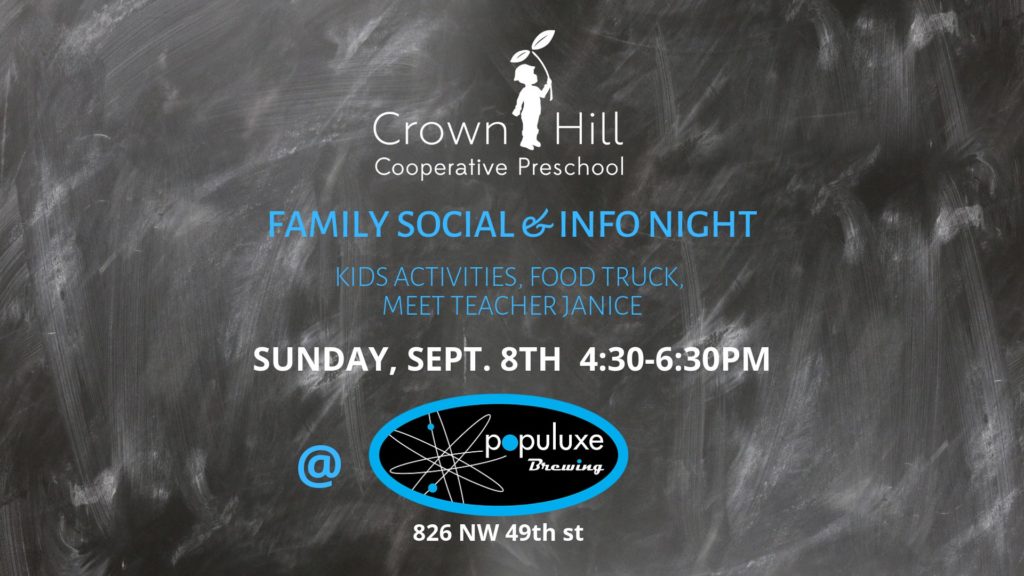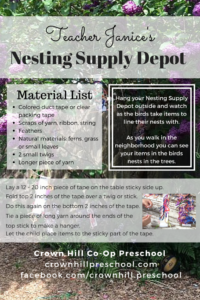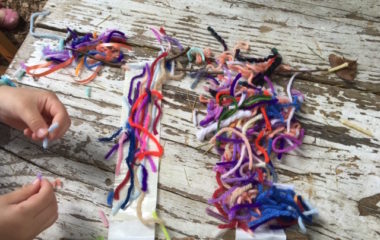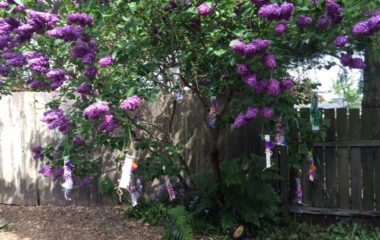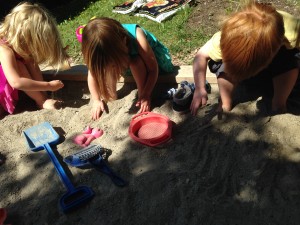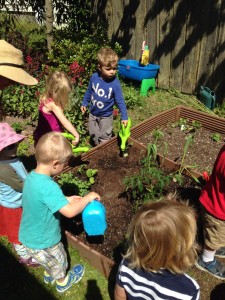What seeds are the essentials for growing a child’s brain? According to John Medina, author of Brain Rules and Brain Rules for Baby, they are:
- The desire to explore
- Self-control (executive function)
- Creativity
- Communication skills—Non-verbal/Verbal
Engage them in activities that will help them as they build relationships. These actions will be the seeds that allow your child to grow into a self-confident, creative, productive person who is able to express his/her thoughts and develop meaningful relationships.
Enjoy your garden!
Creativity

Preschoolers making stepping stones.
Researchers believe creativity has a few core components:
- the ability to perceive relationships between new and old things that result in new ideas
- creating things
- developing activities
- motivating actions that did not exist before
Creativity must also have an emotional connection. This involves risk-taking. For young children it is not as scary to be creative as it is when you get into grade school.
Encourage your child’s creativity by giving them open-ended activities so they can use their minds in a way that allows them the freedom to create. It may not be what you had in mind but it allows them to respond to the environment and materials that have been presented to them.
Blocks
Choose blocks rather than media-based toys that have a pre-set idea already in place. They can create a city, a boat, a world for their small animals. They can practice fine motor skills, discover scientific principles, concentrate on visual awareness. Or, all of the above!
Junk
Junk is a wonderful art/science open-ended starter. Give your child a box of “stuff” that has been collected (juice lid tops, magazines, recycled materials, glue, string, etc.). Let them create. Whatever they chose to create!
Write a Story
If you need an activity that is less messy or you are in an environment that will not allow so much freedom (a restaurant, Grandma’s house, the car or an airplane) have your child look at a picture and come up with a story. Write down (or record) whatever it is they are saying to you, no helping, just whatever they say.
Communication Skills
Your child needs to be able to communicate with you and other people and we need to be able to communicate with them. This is done both verbally and nonverbally.
Verbal
You need to help your child learn words — lots of them! – as well as what they mean. Sign language may help with their ability to learn spoken words. Start by talking, and talking, and talking with your child.
Let them experience a variety of visuals to learn new words that describe the world around them. Take them places, show them pictures, read books to them. Use a variety of words to describe the world around them.
Nonverbal
Nonverbal communication is integral to learning the social skills needed to develop healthy relationships.
If your child can see that their friend is unhappy with their behavior then they can work on the “why” and figure out how to problem solve in that situation. If they do not understand that the face of their friend is “angry” then they won’t know to stop their action until they are hit, bit, pushed or yelled at.
What does a face looks like when it is happy sad, mad, confused, or irritated? While watching your face and hearing your words a child works on developing a vocabulary and the ability to communicate — verbally and nonverbally.
The ability to read nonverbal cues allows one to be part of a successful team: family, friends, school, work, society.
